This article has been reviewed according to Science X's editorial process and policies. Editors have highlighted the following attributes while ensuring the content's credibility:
fact-checked
reputable news agency
proofread
A scientist's 4-decade quest to save the biggest monkey in the Americas
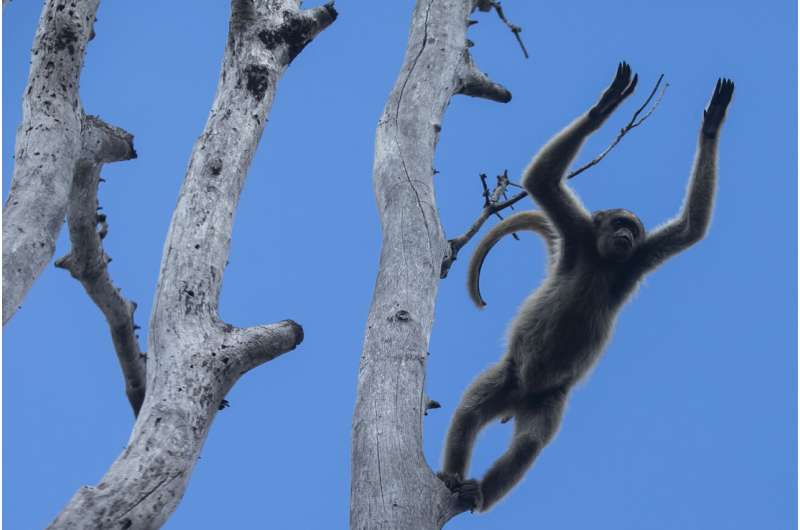
The emerald-green canopy shifts and rustles as a troop of willowy, golden-gray monkeys slides through a tropical ecosystem more threatened than the Amazon.
Karen Strier started studying the biggest monkey in the Americas four decades ago, when there were just 50 of the animals left in this swath of the Atlantic forest, in southeastern Brazil's Minas Gerais state.
Strier immediately fell in love with the northern muriqui, dedicating her life to saving it and launching one of the world's longest-running primate studies.
"I love everything about them; they're beautiful animals, they're graceful, they even smell good, like cinnamon," the American primatologist told The Associated Press on a recent field trip. "It was a complete and total sensory experience that appealed to my mind as a scientist, and to my mind as a person."
Scientists then knew almost nothing of the species, except that it was on the verge of extinction. Rampant deforestation had dramatically reduced and fragmented its habitat, creating isolated pockets of muriquis.
To Strier's surprise, the northern muriqui turned out to be radically different from large primates studied by Jane Goodall and Dian Fossey, the primatologists who made chimpanzees and mountain gorillas, respectively, globally famous emblems of conservation.
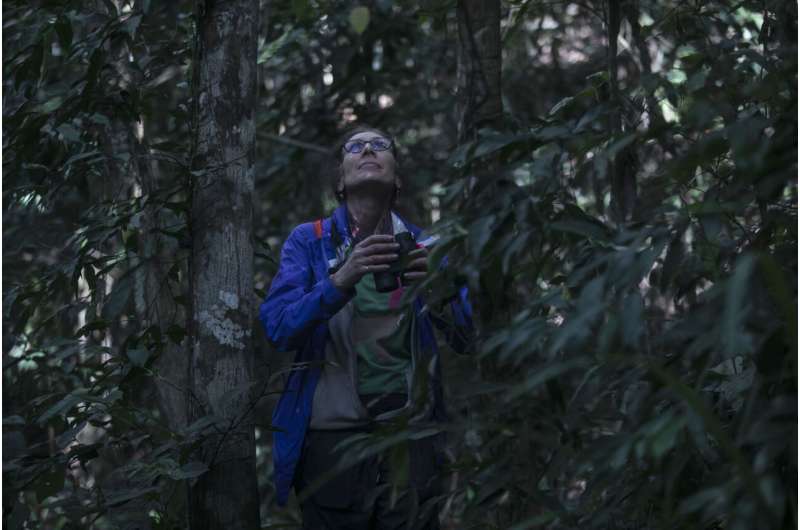
Research was focusing on primates from Africa and Asia, where dominant males frequently fought one another to impose or maintain their power in highly hierarchical societies. Strier herself had spent six months studying baboons in Kenya.
"Muriquis are at the far other extreme of peacefulness," she said.
In 1983, her first year of research, the biologist spent 14 months in the rainforest observing muriquis. This slender vegetarian can measure up to 5 feet (1.5 meters) from head to tail, and weigh up to 33 pounds (15 kilograms). While muriquis can live as long as 45 years, females can only give birth every three years, slowing down efforts to repopulate the species.
She noticed that males spent a lot of time in peaceful proximity—often within arm's reach. And when there's a contest for food, water or a female, males don't fight like most other primates, but wait, avoid one another, or hug.
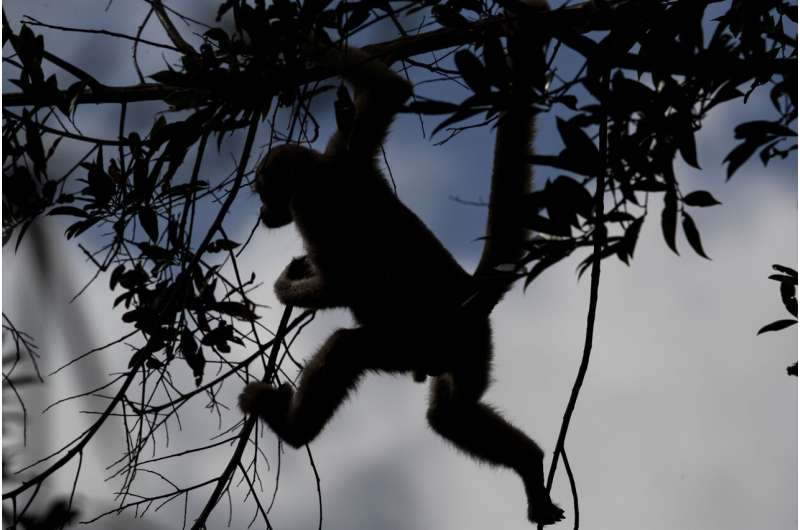
This unusually friendly behavior has earned them the nickname "hippie monkey" among both ordinary people in the area, and scientists.
Some also refer to them as "forest gardeners," for their role as seed dispersers. They eat fruits from high trees that many other animals cannot reach, and defecate the seeds on the forest floor.
Gender roles among muriquis also were unusual among large primates, Strier's initial research found. Much like bonobos, muriqui females are the same size as males, meaning they have a lot of autonomy, and in muriqui societies, females break off from the group to seek partners.
"We now see a lot more variations among primates, and I think the muriquis helped open that door to understanding better some of this diversity," Strier said.
Inside the 2,300-acre (950-hectare) Feliciano Miguel Abdala reserve, a privately protected area where Strier has based her research program, the northern muriqui population has grown nearly fivefold, to 232. That's about one-fifth of the critically endangered species' overall population.
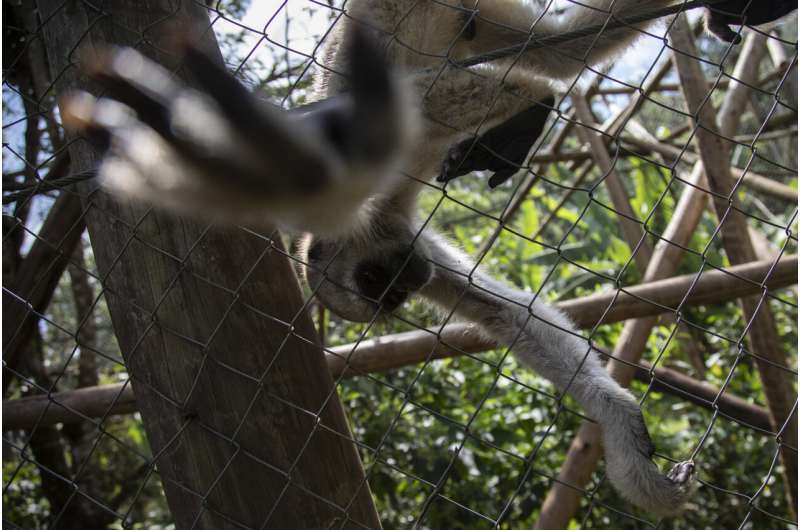
"There are very few (primate projects) that have run that long, continuously, and of that kind of quality in the world," said American primatologist Russell Mittermeier, chief conservation officer at Re:wild, who introduced Strier to the muriquis.
Strier and her team know each of the reserve's 232 muriquis by name, and which monkey they are related to, not by tagging or marking them, but based on detailed illustrations of their facial pigments and other physical traits.
After drought and a yellow fever outbreak killed 100 muriquis—about a third of the reserve's population—in just five years, Strier has strongly advocated for the creation of forest corridors and supporting species reintroduction projects.
In 2016, Fernanda Pedreira Tabacow, a former student and right arm of Strier's, heard that there were only two muriqui males left in a patch of forest in Ibitipoca, southwest of the Feliciano Miguel Abdala reserve. She knew that, without any intervention, they were doomed.
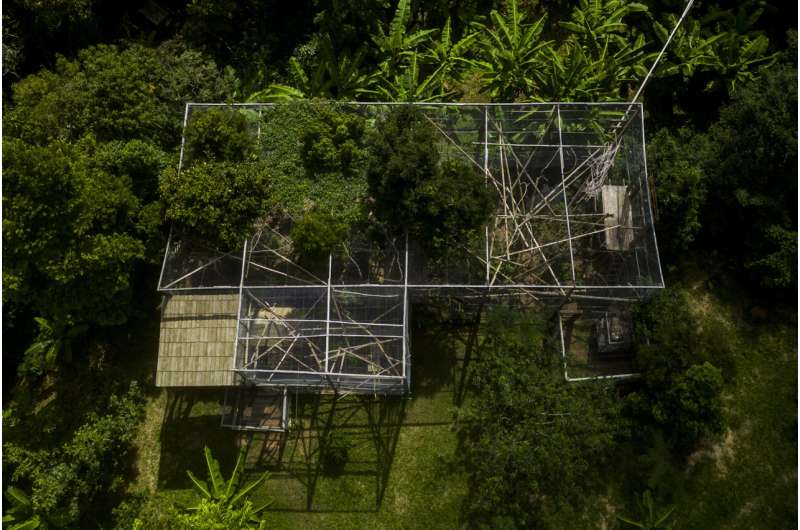
"I thought that was the last breath of the species here," Tabacow said.
To give them a chance to survive, Tabacow relocated a female into the area, but she disappeared before the animals could mate. With that experiment having failed, it was time for more drastic measures. They placed both males in a nearly 15-acre (6-hectare) enclosed area in their native forest along with three females that got lost in their searches for a partner, plus two young orphans.
A year later, in 2020, the experiment bore its first fruit, with the birth of an infant muriqui. The final objective, once there are at least a dozen members in the group, is to release them into the wilderness, Tabacow says.
"The information we had (from Strier's research) facilitated everything, we avoided many mistakes that could have been made," said Tabacow, who also works with Strier in the reserve. "As this project is unprecedented, we have no models to follow, but we have great knowledge about how the species behaves."
-
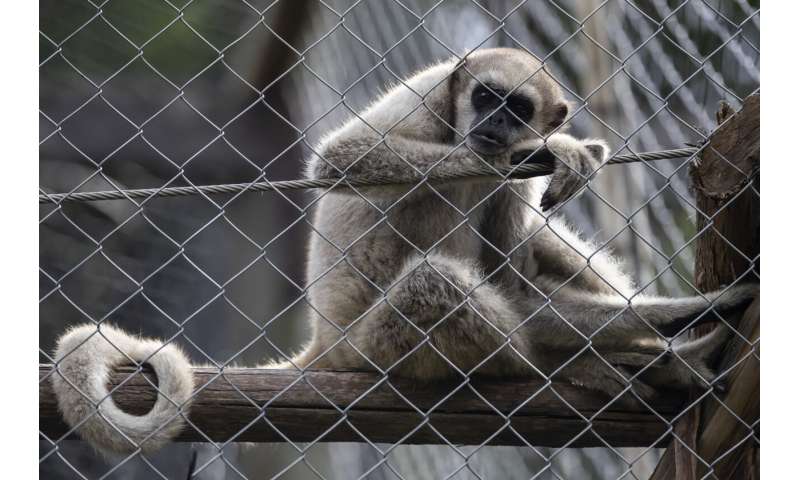
A juvenile northern muriqui monkey is kept captive at an enclosure in a protected area of forest, in Lima Duarte, Minas Gerais state, Brazil, Saturday, May 6, 2023. The northern muriqui is one of the world's most critically endangered primates, according to the IUCN Red List of Threatened Species. It is threatened by hunting and the destruction and fragmentation of its Atlantic Forest habitat. Credit: AP Photo/Bruna Prado -
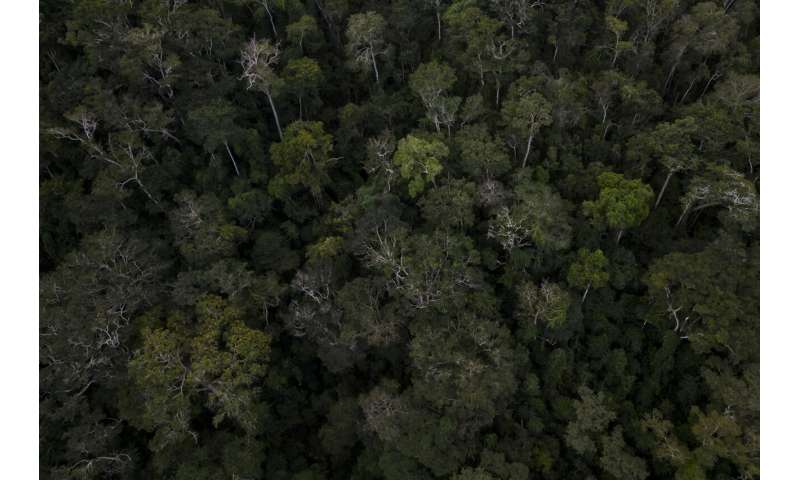
A view of the Feliciano Miguel Abdala Natural Heritage Private Reserve, which is a habitat and research site for the northern muriqui monkey population, in Caratinga, Minas Gerais State, Brazil, Wednesday, June 14, 2023. This critically endangered species is endemic to the Atlantic Forest region of the Brazilian states of Rio de Janeiro, Espírito Santo, Minas Gerais and Bahia. Credit: AP Photo/Bruna Prado -
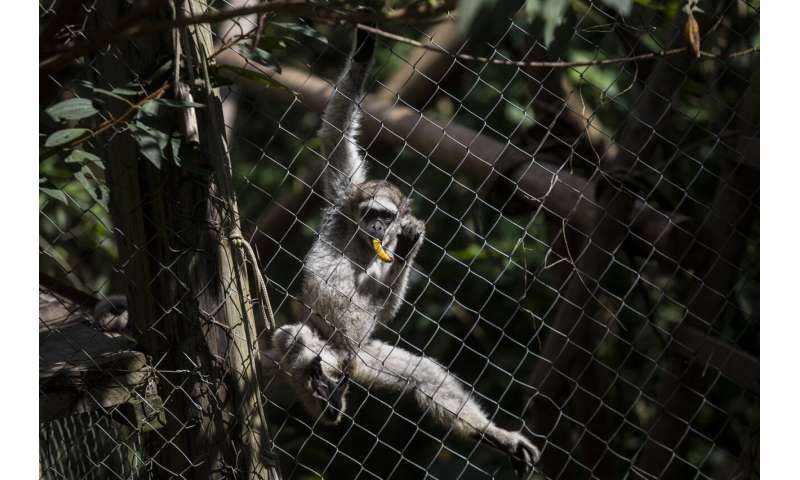
A juvenile northern muriqui monkey eats a banana while in captivity at a protected area of forest, in Lima Duarte, Minas Gerais state, Brazil, Saturday, May 6, 2023. Northern muriqui monkeys exhibit features that allow them to utilize all of their limbs and tails for travel and obtaining food items. Credit: AP Photo/Bruna Prado -
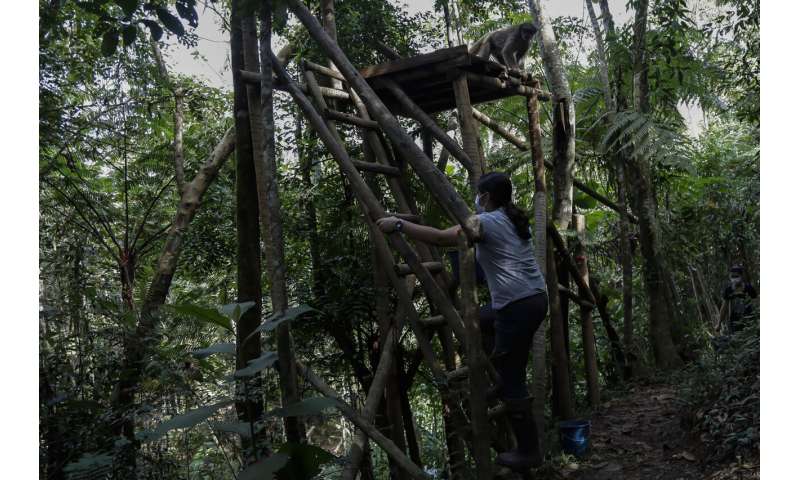
Biologist Clariane Caroline de Araujo climbs onto a platform in a protected area of forest to feed a group of northern muriqui monkeys, in Lima Duarte, Minas Gerais state, Brazil, Saturday, May 6, 2023. The critically endangered northern muriqui monkey population has grown nearly fivefold, to 232. That’s about one-fifth of the critically endangered species’ overall population. Credit: AP Photo/Bruna Prado -
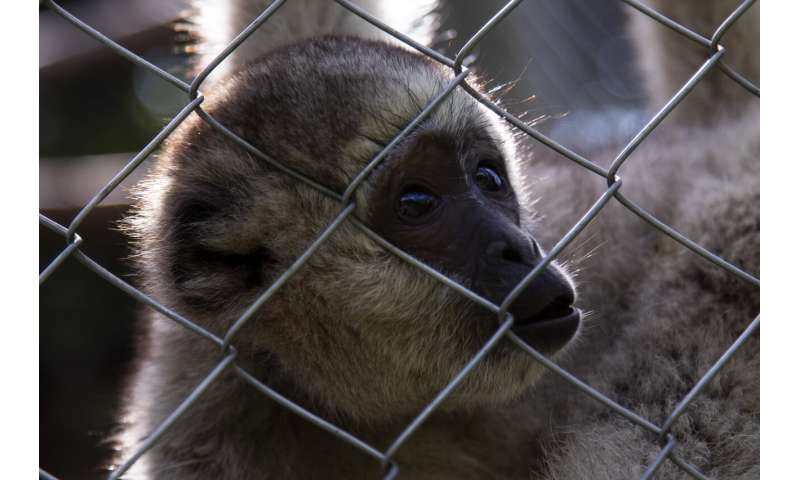
A juvenile northern muriqui monkey looks out from its enclosure in the Muriqui House project for the conservation and reintroduction of the northern muriqui monkey, in Lima Duarte, Minas Gerais state, Brazil, Saturday, May 6, 2023. This critically endangered species is endemic to the Atlantic Forest region of the Brazilian states of Rio de Janeiro, Espírito Santo, Minas Gerais and Bahia. Credit: AP Photo/Bruna Prado -
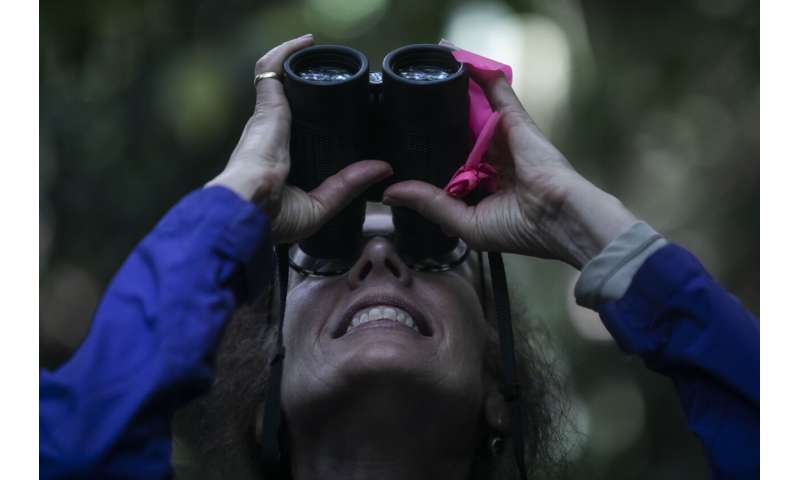
American biological anthropologist Karen Strier observes northern muriqui monkeys at the Feliciano Miguel Abdala Private Natural Heritage Reserve, in Caratinga, Minas Gerais state, Brazil, Wednesday, June 14, 2023. Strier describes her first encounter with the willowy, critically endangered golden-grey monkey as “love at first sight.” Credit: AP Photo/Bruna Prado -
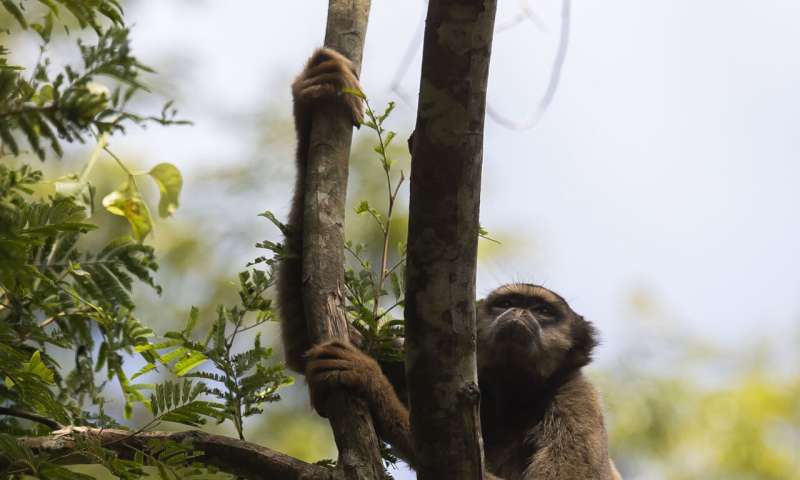
A northern muriqui monkey carries her juvenile up a tree at the Feliciano Miguel Abdala Natural Heritage Private Reserve, in Caratinga, Minas Gerais State, Brazil, Wednesday, June 14, 2023. Northern muriqui social groups are dominated by females, and males will continue to associate closely with their mothers into adulthood. Credit: AP Photo/Bruna Prado -

Eliot, the first northern muriqui monkey born in an enclosed area of the Atlantic Forest in the district of Ibitipoca, hangs from a tree brach in Lima Duarte, Minas Gerais state, Brazil, Saturday, May 6, 2023. The northern muriqui exhibit features that allow them to utilize all of their limbs and tails for travel and obtaining food items. Credit: AP Photo/Bruna Prado
Earlier this month, primatologists, environmentalists and other muriqui enthusiasts from Brazil and abroad converged on the small city of Caratinga to celebrate Strier's 40th year of uninterrupted study. She started by thanking peers and the many students who are carrying forward her work.
She also used her stage to advocate for the creation of a forest corridor linking the Feliciano Miguel Abdala reserve to another area 25 miles (40 kilometers) away, urging the Environment Ministry representative to follow suit. Underscoring the need for the northern muriqui to have a greater range, she spoke of the "terrifying" yellow fever outbreak several years back.
"We couldn't find the muriquis, and the howler (monkeys) were almost all gone, and the sense of being in a silent forest...." Strier recalled. "We had had such success, and it could all disappear in a few months. The fragility of the muriquis, still, made me realize it was super important to not let our guard down. I just got even more committed. We're not done."
© 2023 The Associated Press. All rights reserved. This material may not be published, broadcast, rewritten or redistributed without permission.


















